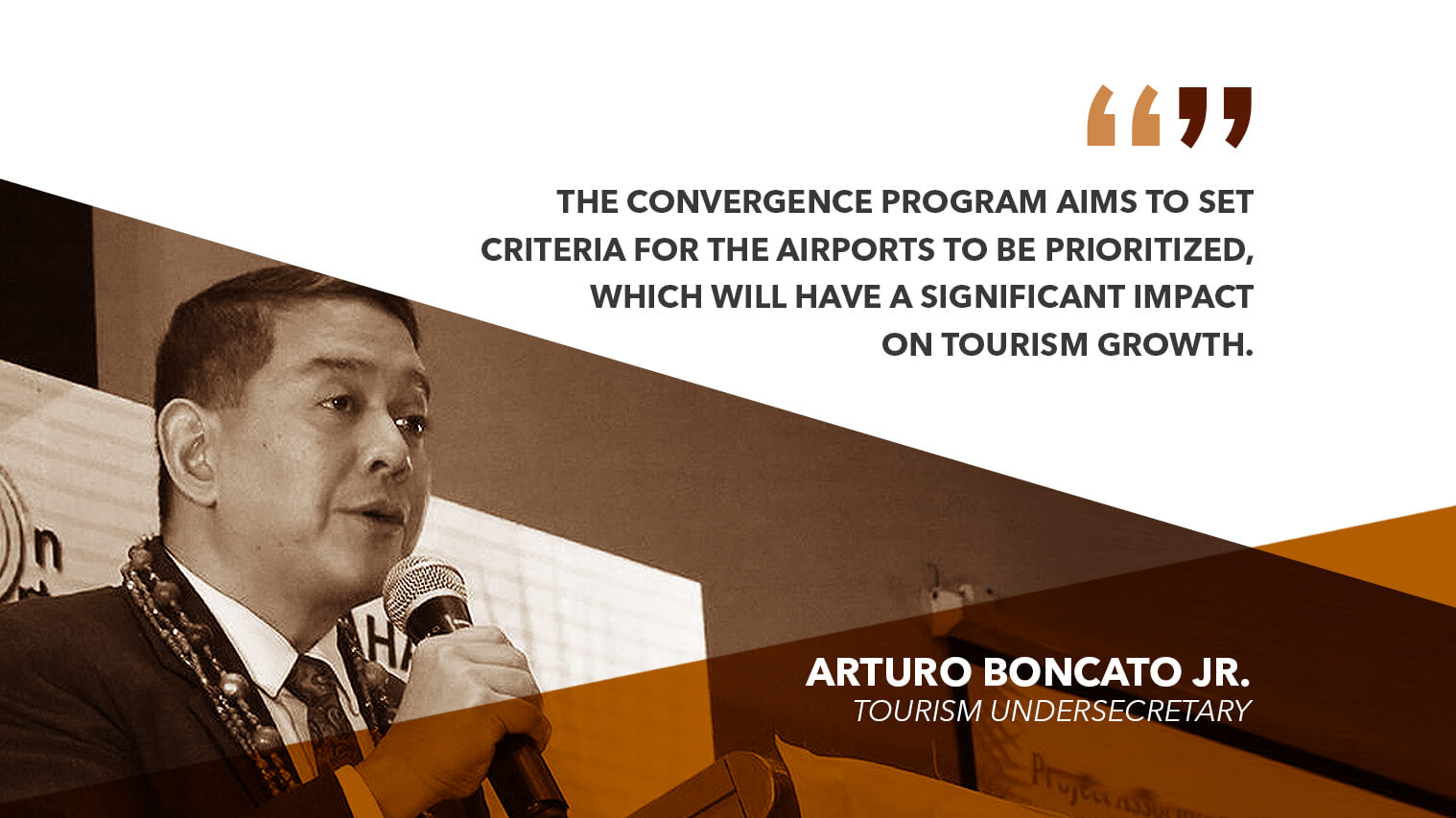The Department of Tourism (DOT) has partnered with the Department of Transportation (DOTr) to develop at least 85 airports across the country to promote tourism growth.
“We are talking about developing our airports so that we have more capacity to receive flights from other destinations and accommodate more tourists to the country,” Tourism Undersecretary Arturo Boncato Jr. said in an interview with reporters on the sidelines of the DOT-DOTr convergence conference on airport development in Makati City.
Boncato said the convergence program aims to set criteria for the airports to be prioritized, which will have a significant impact on tourism growth.
“We also like to develop a certain path in developing airports that need initial help. There are small airports that would require some attention. They’re not primary; they are secondary they probably don’t have the desired number of tourists yet but given the potential of the destination we could give more attention to it in developing,” the tourism official said.
He said the DOT wants to primarily focus on modernizing the infrastructure and facilities of the airports in provinces to provide direct flights from tourists in major gateways of the country such as Manila, Cebu, Davao and Clark.
“For instance, we would like to give as an example the Davao International Airport. There is a small airport in Mati, Davao Oriental if you travel by land that’s around three hours from the Davao International Airport but if we open the small airport in Mati that would help improve the economy of not only Davao Oriental but Compostela Valley all the way to the eastern seaboard going to Surigao. So that is the kind of concept that we would like to rollout in developing our airports. So there’s a hub and there’s spokes — small airports to support the big airports,” Boncato enumerated.
He added that the DOT is eyeing to tap the existing budget from the DOTr for the development of regional airports.
“There is an existing source of budget from the DOTr. It’s a three-year rolling pipeline in terms of developing airports. We will actually use that initially and if there is a need to source out to further push the program. We will find means to do that,” Boncato said.
“There is an existing source of budget from the DOTr. It’s a three-year rolling pipeline in terms of developing airports.”
The Tourism department will provide inputs to the DOTr on the airports to be prioritized, which will be based on increasing demand of tourists.
Meanwhile, Cherry Lyn Rodolfo, consultant of the Asia Foundation, has proposed that the development of the airports should be based on the following categories: development of new airport in identified tourist destination areas (TDA) without any existing airport facility; upgrading (expansion, improvement, rehabilitation) of an existing airport serving commercial traffic and general aviation in the same location; transfer of existing airports to a new location within the same province to address physical constraints of the airport; development of a new airport in an identified TDA with existing airport but not serving any commercial traffic and development of a new airport in an identified TDA with existing airports serving commercial traffic.
“These airports will be developed in 20 clusters covering Northern, Central and Southern Philippines covering 49 tourism destination areas,” Rodolfo said.
“These airports will be developed in 20 clusters covering Northern, Central and Southern Philippines covering 49 tourism destination areas.”
The current prioritization criteria of DOTr on locally funded development projects for airports are based on the number of cargoes and aircraft traffic handled for the past three years, service to development centers, and those serving areas with economic potential/viable geographical location of airports.
Currently, there are 13 domestic airports and 12 international airports across the country that are either completed or have ongoing improvements and upgrades, according to the DOTr.
The DOTr has completed the night-rating of 20 out of 42 airports, making them capable of handling nighttime flights.
The convergence program is expected to lead to the signing of a formal agreement between DOTr Secretary Arthur Tugade and DOT Secretary Bernadette Romulo-Puyat on the criteria for the prioritization and development of primary and secondary airports in the country.


